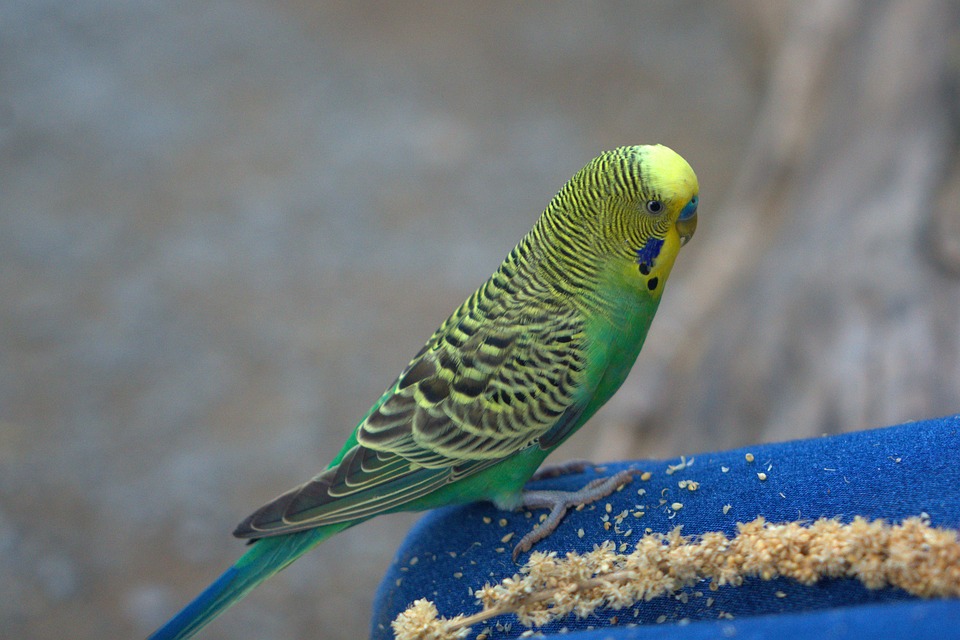Parrots are incredibly intelligent creatures that thrive on mental stimulation and interaction with their human companions. One way to provide such engagement is through trick training. By setting up a dedicated parrot trick training corner, you can create a safe and stimulating environment where your feathered friend can learn new behaviors and showcase their incredible abilities. In this article, we will guide you through the process of creating a parrot trick training corner and offer tips for effective training.
Why Set Up a Parrot Trick Training Corner?
Before delving into the details of creating a parrot trick training corner, let’s explore the reasons why it is beneficial for both you and your parrot:
1. Mental Stimulation: Parrots require mental stimulation to stay happy and healthy. Trick training provides an excellent outlet for their intelligent minds, preventing boredom and potential behavioral issues.
2. Bonding and Trust: Training sessions offer opportunities for you and your parrot to reinforce the bond and build trust. Positive reinforcement during training helps establish a strong relationship based on trust and mutual respect.
3. Confidence Boost: As your parrot learns new tricks and behaviors, their confidence levels soar. This newfound confidence can positively impact their overall well-being.
Setting Up Your Parrot Trick Training Corner
Now that you understand the importance of a trick training corner, let’s dive into the steps to set it up effectively:
1. Select a Suitable Location: Find a quiet corner in your home where your parrot feels comfortable and safe. Ensure the area is away from distractions and noise, allowing your parrot to focus on training.
2. Provide Adequate Lighting: Natural light is ideal, but if it’s not possible, make sure the training corner is well-lit. Good lighting helps your parrot see and understand your cues clearly.
3. Create a Comfortable Perching Area: Install a sturdy perch or play gym in the training corner. Parrots need a comfortable space to perch during training sessions. Include a variety of perches at different heights to cater to your parrot’s preferences.
4. Gather Training Tools: Prepare a toolkit with essential training tools, including treats, a clicker, target stick, and a training perch. These tools will aid in teaching new tricks and reinforcing positive behaviors.
5. Use Visual Cues: Decorate the training corner with visual cues, such as posters or pictures depicting the tricks you want to teach your parrot. This visual aid can help reinforce their learning and serve as a reminder for both you and your parrot.
Effective Parrot Trick Training Techniques
Now that your parrot trick training corner is ready, let’s explore some effective techniques to maximize your training sessions:
1. Positive Reinforcement: Use positive reinforcement techniques, rewarding your parrot with treats, praise, or a clicker whenever they exhibit the desired behavior. Positive experiences during training create a positive association, motivating your parrot to continue learning.
2. Short and Frequent Sessions: Keep training sessions short and focused, ranging from 5 to 10 minutes, several times a day. Parrots have short attention spans, so breaking the training into small sessions ensures they stay engaged and attentive.
3. Step-by-Step Approach: Break down complex tricks into smaller, achievable steps. Teach your parrot one step at a time, gradually building up to the final behavior. This approach helps your parrot understand and master each component before moving on.
4. Patience and Consistency: Patience is key when training your parrot. Every parrot learns at their own pace, so be patient and avoid rushing the process. Consistency is equally important. Stick to a regular training schedule to reinforce learned behaviors and prevent regression.
FAQs: Frequently Asked Questions
Q: How long does it take to teach a parrot a new trick?
A: The time required to teach a parrot a new trick varies depending on the complexity of the behavior and your parrot’s individual learning abilities. Some tricks can be learned in a few days, while others may take weeks or even months.
Q: What treats should I use during training sessions?
A: Choose small, healthy treats that your parrot finds irresistible. Nutritious options include small pieces of fruit, vegetables, or specially formulated parrot treats. Avoid sugary or high-fat treats that may negatively impact your parrot’s health.
Q: Can any parrot learn tricks, regardless of age or species?
A: Yes, most parrot species, regardless of age, can learn tricks. However, keep in mind that younger parrots tend to be more receptive to training. Older parrots may require more patience and time, but they can still learn and enjoy the training process.
Q: How can I prevent my parrot from becoming bored during training?
A: To prevent boredom, keep training sessions varied and interesting. Introduce new tricks, offer different challenges, and rotate toys and enrichment items in the training corner. Additionally, ensure your parrot gets plenty of social interaction and mental stimulation outside of training sessions.
By following these guidelines and incorporating your parrot’s individual needs and preferences, you can create a parrot trick training corner that promotes learning, engagement, and a deeper bond between you and your feathered companion. Happy training!









